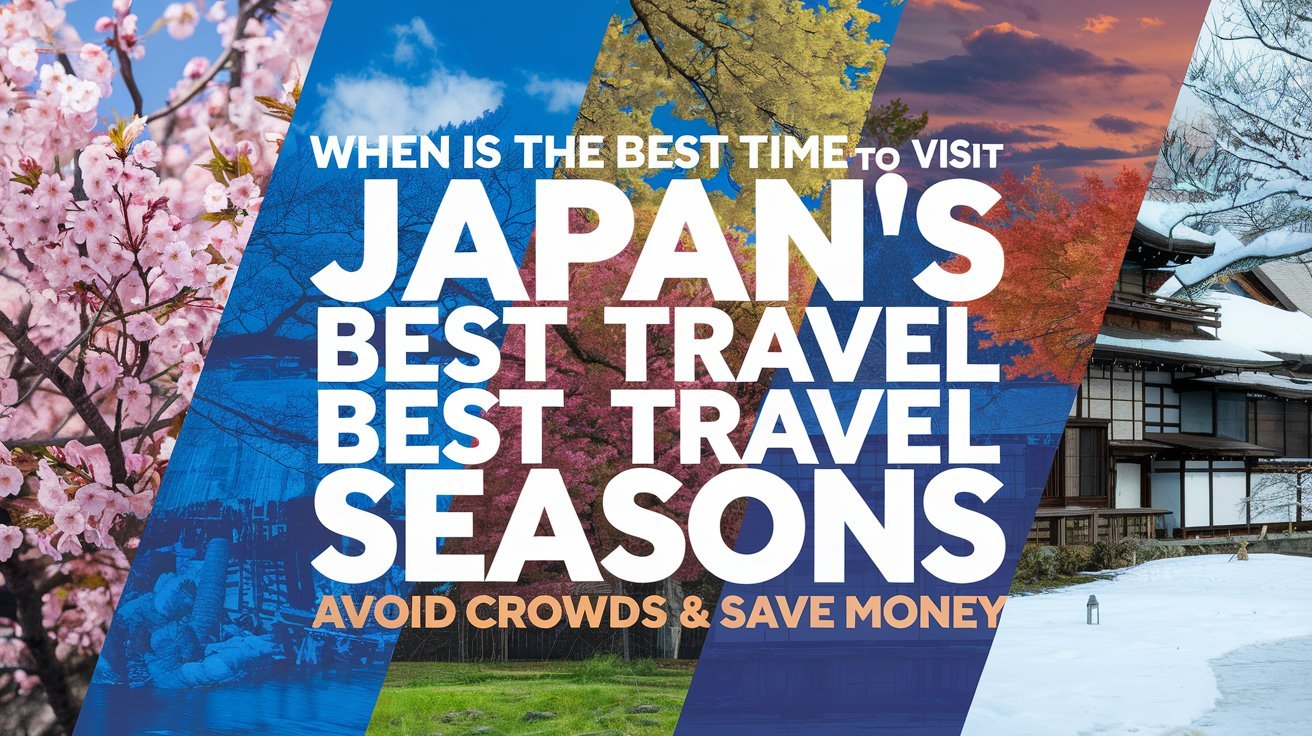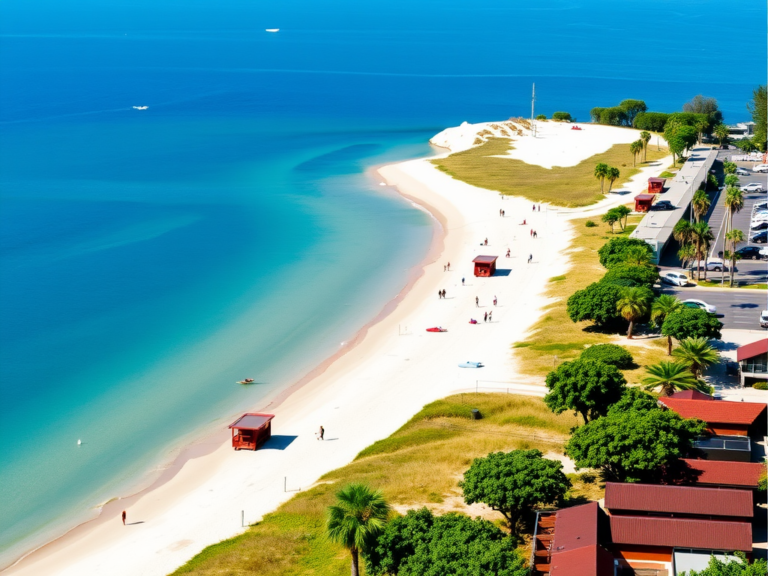When Is the Best Time to Visit Japan? Avoid Crowds & Save Money
Japan is a country that offers something spectacular in every season. Whether you’re drawn to the delicate cherry blossoms of spring, the vibrant festivals of summer, the breathtaking autumn foliage, or the pristine snowscapes of winter, timing your visit can make or break your experience. This guide will help you determine the best time to visit Japan based on weather, crowds, costs, and activities so you can make the most of your trip.
Spring (March to May): Cherry Blossoms and Comfortable Weather
Spring is arguably the most popular time to visit Japan. The temperatures range from 10°C to 20°C (50°F to 68°F), making it comfortable for sightseeing.
Cherry Blossom Season (Sakura)
The iconic cherry blossom season (sakura) typically peaks from late March to early April. Famous viewing spots include Tokyo’s Ueno Park, Kyoto’s Maruyama Park, and Osaka Castle Park. Hanami (flower viewing) is a beloved tradition where locals and tourists gather under the blooming trees for picnics.
Festivals and Events
Spring also hosts several cultural events, such as the Takayama Spring Festival and the Hakata Dontaku Festival. These festivals feature elaborate floats, traditional performances, and local cuisine.
Pros and Cons
Pros: Stunning cherry blossoms, comfortable weather, numerous festivals.
Cons: High travel costs, crowded tourist spots, need for early accommodation bookings.
Summer (June to August): Festivals and Mountain Adventures
Summer in Japan is hot and humid, with temperatures between 25°C and 35°C (77°F to 95°F). However, it’s also an exciting season with vibrant festivals and opportunities for outdoor adventures.
Rainy Season (Tsuyu)
June marks Japan’s rainy season (tsuyu), especially in central and southern regions. While it’s not an ideal time for sightseeing, it’s a great period for indoor activities, such as exploring museums, temples, and onsens.
Fireworks and Festivals
Japan’s summer is famous for fireworks festivals (hanabi taikai) and lively events like the Gion Matsuri in Kyoto and Tenjin Matsuri in Osaka. These feature colorful processions, street food, and impressive fireworks displays.
Climbing Mount Fuji
July and August are the official climbing months for Mount Fuji, Japan’s iconic peak. If you’re an adventure enthusiast, this is the best time to hike to the summit.
Pros and Cons
Pros: Exciting festivals, outdoor adventures, Mount Fuji climbing season.
Cons: Hot and humid weather, crowded events, higher airfare during school vacations.
Autumn (September to November): Stunning Foliage and Pleasant Weather
Autumn is another excellent season to visit Japan, with mild temperatures ranging from 15°C to 25°C (59°F to 77°F). The highlight of this season is the stunning autumn foliage (koyo).
Beautiful Autumn Leaves
From mid-October to early December, Japan transforms into a breathtaking canvas of red, orange, and yellow hues. Popular viewing spots include Kyoto’s Arashiyama Bamboo Forest, Nikko’s Lake Chuzenji, and Tokyo’s Shinjuku Gyoen.
Fewer Tourists and Lower Costs
Compared to cherry blossom season, autumn sees fewer tourists and lower accommodation prices, making it an ideal time for budget-conscious travelers who still want to experience Japan’s natural beauty.
Food and Seasonal Delights
Autumn is also a fantastic season for food lovers. Seasonal specialties include matsutake mushrooms, grilled sanma (Pacific saury), and sweet potatoes.
Pros and Cons
Pros: Stunning foliage, comfortable weather, fewer crowds, lower costs.
Cons: Typhoon season in September, shorter daylight hours.
Winter (December to February): Snowy Landscapes and Festive Celebrations
Winter in Japan is magical, particularly in the northern regions and mountainous areas. Temperatures vary from -5°C to 10°C (23°F to 50°F), depending on the region.
Skiing and Snowboarding
Japan is a top destination for winter sports, with world-class ski resorts in Hokkaido (Niseko, Furano) and Nagano (Hakuba, Nozawa Onsen). If you enjoy skiing or snowboarding, this is the best season for you.
Illuminations and Winter Festivals
Winter brings stunning illuminations, especially in Tokyo, Osaka, and Kobe. The Sapporo Snow Festival in February showcases massive ice sculptures, attracting visitors from around the world.
Onsen (Hot Springs)
There’s nothing better than soaking in a natural onsen (hot spring) during winter. Popular onsen towns include Hakone, Kusatsu, and Beppu.
Pros and Cons
Pros: Winter sports, beautiful illuminations, fewer crowds (except during New Year’s).
Cons: Cold weather, limited activities in some regions, higher prices during holidays.
Best Time to Visit Japan Based on Travel Preferences
Best Time for Budget Travelers
November to early December and mid-January to February offer the lowest prices on flights and accommodations. Avoid peak seasons like cherry blossoms (March-April) and Golden Week (early May).
Best Time to Avoid Crowds
Late May, early June, September, and early December see fewer tourists, making for a more relaxed experience at major attractions.
Best Time for Cherry Blossoms
Late March to early April is the prime time for cherry blossoms, but be prepared for large crowds and high travel costs.
Best Time for Autumn Foliage
Mid-October to early December provides stunning fall colors with fewer tourists compared to spring.
Best Time for Skiing
December to February is perfect for winter sports in Hokkaido, Nagano, and Niigata.
Conclusion: Choosing the Right Time for Your Trip
The best time to visit Japan depends on what you want to experience. If cherry blossoms are your priority, aim for spring. If you love skiing, winter is unbeatable. Autumn offers breathtaking foliage and lower costs, while summer is perfect for festivals and climbing Mount Fuji. Whatever your choice, Japan’s rich culture and stunning landscapes make every season a unique adventure.
Read Also Our This Post: America’s Best Locations: Top Must-Visit Spots in Every State







